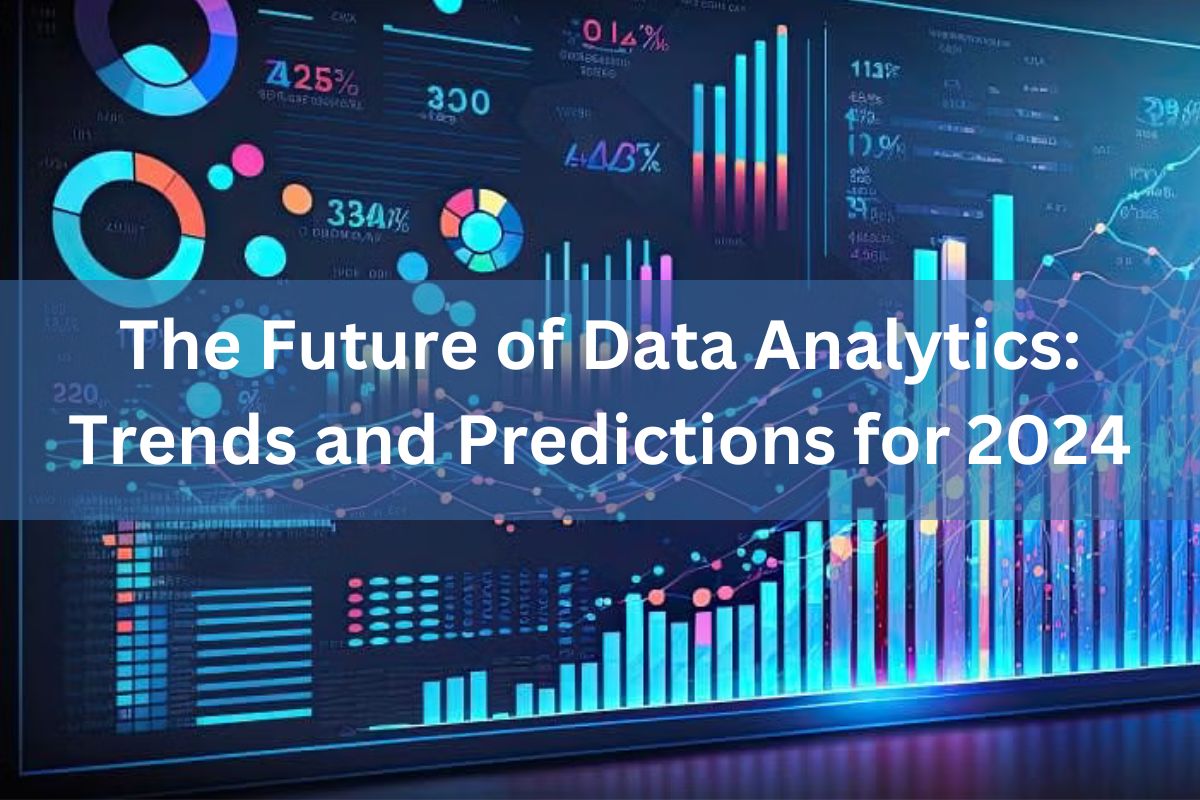As we approach 2024, data analytics is set to undergo significant transformations. Emerging technologies, evolving methodologies, and growing concerns around data privacy are reshaping the field. This exploration of the future of data analytics highlights key trends and predictions, offering insights into how advancements will impact industries, decision-making, and the broader landscape of data-driven innovation.
Define Data Analytics
Data Analytics refers to the process of systematically examining data sets to uncover patterns, draw conclusions, and support decision-making. It involves using various techniques and tools to collect, clean, analyze, and interpret data. The goal is to gain insights that can inform strategic decisions, improve business processes, and drive overall performance. Data analytics can include descriptive, diagnostic, predictive, and prescriptive analysis, each serving different purposes in understanding and leveraging data.
Key Trends and Predictions for 2024 of data analytics
1. Increased Use of Artificial Intelligence and Machine Learning
Artificial Intelligence (AI) and Machine Learning (ML) are no longer just buzzwords; they are central to the future of data analytics. In 2024, these technologies will become even more integrated into analytics platforms. AI and ML will enhance data processing capabilities, allowing for more accurate predictions and deeper insights. Automated data analysis will enable organizations to quickly identify patterns and anomalies, which can lead to more informed decision-making and improved operational efficiency.
2. Growth of Real-Time Analytics
Real-time data analytics will become increasingly crucial in 2024. As businesses strive to stay competitive, the ability to analyze data as it is generated will offer significant advantages. This will be particularly important for industries like finance, healthcare, and retail, where timely information can drive critical decisions. Technologies like stream processing and real-time dashboards will help organizations monitor and respond to data as it flows in, leading to more agile and responsive business operations.
3. Expansion of Predictive and Prescriptive Analytics
Predictive analytics, which forecasts future trends based on historical data, will continue to evolve. In 2024, we can expect a significant expansion in predictive capabilities, with more sophisticated models providing higher accuracy. Prescriptive analytics, which goes a step further by recommending actions based on predictions, will also gain prominence. This will enable businesses to not only anticipate future outcomes but also take proactive measures to achieve desired results.
4. Emphasis on Data Privacy and Security
With the increasing volume of data being collected, data privacy and security will be major concerns in 2024. Regulations such as the GDPR and CCPA have already set the stage for stricter data protection measures. Organizations will need to invest in robust security systems to safeguard sensitive information. Data anonymization and encryption techniques will become more advanced to ensure that personal data is protected while still allowing for meaningful analysis.
5. Rise of Edge Computing
Edge computing will play a significant role in the future of data analytics. Instead of sending data to centralized data centers for processing, edge computing involves analyzing data closer to its source. This reduces latency and bandwidth usage, making real-time analytics more feasible. For industries like manufacturing and transportation, where data needs to be processed instantly, edge computing will be a game-changer.
6. Integration of Data from Multiple Sources
As the number of data sources grows, integrating data from various platforms will be essential. In 2024, we will see advancements in data integration technologies that simplify the process of combining and analyzing data from disparate sources. This will allow organizations to gain a more comprehensive view of their operations and customer behavior, leading to better insights and more informed decisions.
7. Enhanced Data Visualization
Data visualization tools will continue to evolve, making it easier for users to interpret complex data. In 2024, we can expect more interactive and intuitive visualization options. Advanced graphics and interactive dashboards will help users understand data trends and patterns more clearly. Visualization will become a crucial tool for communicating insights effectively to stakeholders and decision-makers.
8. Growth of Augmented Analytics
Augmented analytics, which combines AI and ML with traditional analytics methods, will become more prevalent. This approach enhances data analysis by providing automated insights and recommendations. In 2024, augmented analytics will help users uncover hidden patterns and trends more efficiently, enabling faster and more accurate decision-making. This will democratize data analytics, allowing users with varying levels of expertise to leverage advanced analytical tools.
9. Increased Focus on Data Quality
As the reliance on data-driven decisions grows, ensuring data quality will be more important than ever. Inaccurate or incomplete data can lead to misleading insights and poor decision-making. In 2024, organizations will place a greater emphasis on data governance and quality management. This includes implementing rigorous data validation processes and investing in tools that ensure data accuracy and consistency.
10. Expansion of Data Analytics in Various Sectors
Data analytics will continue to expand across different sectors. In healthcare, data analytics will drive advancements in personalized medicine and patient care. In agriculture, it will support precision farming techniques. In education, it will enhance learning outcomes through personalized learning experiences. The versatility of data analytics will lead to its increased adoption in various fields, driving innovation and efficiency.
Key Points Highlighting the importance of a Data Analyst
Informed Decision-Making: Provides insights that help organizations make data-driven decisions.
Trend Identification: Analyzes data to identify trends and patterns that can influence strategic planning.
Performance Measurement: Tracks and evaluates key performance indicators to assess organizational success.
Problem Solving: Helps identify and address issues by uncovering underlying data-driven causes.
Efficiency Improvement: Recommends ways to optimize processes and increase operational efficiency.
Conclusion
The future of data analytics is bright and full of potential. With advancements in AI and ML, real-time analytics, and data privacy measures, the field is set to transform how we understand and use data. The integration of data from multiple sources, along with enhanced visualization and augmented analytics, will provide deeper insights and more accurate predictions. As data analytics continues to evolve, its impact will be felt across industries, driving progress and innovation in ways we are only beginning to imagine. To advance skills in this dynamic field, consider exploring a Data Analytics Certification Course in Indore, Delhi, Ghaziabad, and other nearby cities in India.
FAQs on The Future of Data Analytics: Trends and Predictions for 2024
1. What are the main trends in data analytics for 2024?
The key trends include the increased use of AI and machine learning, growth of real-time analytics, expansion of predictive and prescriptive analytics, emphasis on data privacy and security, rise of edge computing, integration of data from multiple sources, enhanced data visualization, and the growth of augmented analytics.
2. How will artificial intelligence impact data analytics in 2024?
AI will significantly enhance data analytics by automating data processing, improving predictive accuracy, and uncovering deeper insights. AI-driven tools will streamline data analysis, allowing for more precise and actionable results.
3. What is real-time analytics, and why is it important?
Real-time analytics involves analyzing data as it is generated, providing immediate insights and enabling quick responses. It is crucial for industries that require timely information for decision-making, such as finance, healthcare, and retail.
4. How does predictive analytics differ from prescriptive analytics?
Predictive analytics forecasts future trends based on historical data, while prescriptive analytics recommends specific actions to achieve desired outcomes. Both are valuable for making informed decisions, but prescriptive analytics goes a step further by suggesting actionable steps.
5. What are the challenges related to data privacy and security in 2024?
Challenges include managing and protecting increasing volumes of data, complying with stringent data protection regulations, and safeguarding against data breaches. Organizations will need to implement robust security measures and data governance practices to address these concerns.




